Bond Discounting
Previous Lesson: Loan Amortization
Next Lesson: Share Valuation
Bond Discounting can be identify from the cash flows attached to the particular bond. Bonds are the most important fixed income securities. A bond is a legal obligation to repay a loan’s principal and interest (Coupon). It is debt. Term Finance Certificate (TFC issued by public listed industrial companies), Defense Saving Certificate (DSC issued by Government), T-Bill (issued by Government). Bond paper contains legal & numerical points
Bonds Numerical Features
Following are some numerical features of bonds:
Maturity or Tenure or Life
Measured in years. On the Maturity Date when the bond expires, the Issuer returns all the money i.e. 6 months, 1 year, 3 years, 5 years, and 10 years, etc.
Par Value or Face Value
Principal Amount (generally printed on the bond paper) returned at maturity i.e. $1,000 or $10,000. Contrast this to Market Value (or Actual Price based on Supply/Demand) & Intrinsic or Fair Value
Coupon Interest Rate
Percentage of Par Value paid out as interest irrespective of changes in Market Value i.e. 5 % pa, 10 % pa, 15% pa, etc. Coupon Receipt = Coupon Rate x Par Value. Coupon Receipts can be paid out monthly, quarterly, six-monthly, annually etc. Coupon Rate = Annual coupon amount / face value of bond
The Indenture
The indenture is the written agreement between the corporation (the borrower) and its creditors. It is sometimes referred to as the deed of trust.
Types of Bonds
Following are major types of bonds:
Mortgage Bonds
Backed & secured by real assets.
Debentures
These are not secured by real property, risky.
Floating Rate Bond
It is defined as a type of bond bearing a yield that may rise and fall within a specified range according to fluctuations in the market.
Eurobonds
It issued from a foreign country.
Zero Coupon Bonds
No regular interest payments and issue at discount.
Convertible Bonds
A convertible bond is a bond which can be converted into the company’s common stock. You can exercise the convertible bond and exchange the bond into a predetermined amount of shares in the company. The conversion ratio can vary from bond to bond.
Consol
A bond that carries a promise to pay a coupon forever; it has NO maturity date and therefore never matures.
Bond Prices
Bonds will sell at Face Value, at a Discount, or at a Premium
Face Value: Bonds sell at face value when market interest rates for similar bonds are the same as the coupon on the bond. A $1,000, 10-year bond with a 9% coupon rate, will sell at $1,000 when similar bonds are yielding 9%.
Discount: Bonds sell at a discount to face value when similar bonds have higher yields. The bond in the example above will sell at $939 when market yields on similar bonds are 12%.
Premium: Bonds sell at a premium when similar bonds in the current market have lower yields. Again, in the example above, the bond will sell for $1,067 when similar bonds are yielding 8%.
>> Practice Bond Discounting MCQs.
Bond Discounting (Annually)
The Value of the Bond can be calculated from the Cash Flows attached to the Bond. The bond holder will receive the coupon interest rate and he will also receive his principle amount at the time of maturity:
Formula
Time Value of Money Formula Sheet Download
Example # 1:
Consider a bond that pays a 10% coupon rate of interest, has a par value of $1,000 and matures in 4 years. Suppose also that the market rate of interest for such a bond (required rate of return) is 8%. Calculate the intrinsic value of bonds?
Present Value of Annuity Table Download
Present Value of a Single Amount Table Download
>> Further Reading Share Valuation.
Bond Discounting (Intra-year)
When coupon payment are made more than one time in the year
Example # 2:
Consider an 8 year, 12 percent coupon bond with a par value of $1,000 on which interest is payable semi-annually. The required return on this bond is 14 percent?
Console Valuation
Irredeemable bonds do not have a maturity date
Example # 3:
Suppose you could buy bond that paid $50 a year forever. Assuming that your rate of return for this type of bond is 12 percent annually?
Zero Coupon Bond Discounting
The price of a zero coupon bond is always less than its redemption value
Example # 4:
Suppose that ABC Company issues zero coupon bonds having a 10 year maturity and $1,000 face value. If discount rate 8%?
>> Practice Bond Discounting MCQs.
Console Valuation
Irredeemable bonds do not have a maturity date
Example # 3:
Suppose you could buy bond that paid $50 a year forever. Assuming that your rate of return for this type of bond is 12 percent annually?
Zero Coupon Bond Discounting
The price of a zero coupon bond is always less than its redemption value
Example # 4:
Suppose that ABC Company issues zero coupon bonds having a 10 year maturity and $1,000 face value. If discount rate 8%?
Current Yield
The current yield relates the annual coupon interest to the closing market price. It is expressed as
Example # 5:
What will be current yield when 10 years, 12 percent coupon bond with par value of $1,000 and selling for $950?
Yields to Maturity (YTM)
The yield to maturity (YTM) of a bond is expected rate of return for the bond. It is the return you expect to receive when you buy a bond and held to maturity. It is the discount rate that makes the present value of the cash flows from the bond equal to the current price of the bond. The internal rate of return for the cash flows associated with a bond is called the yield to maturity
Example # 6:
Suppose you were offered a 3 year, 10% annual coupon, and $1,000 par value bond at a price of $952. What rate of interest would you earn on your investment if you bought the bond and held it to maturity?
Price-Yield Relationship
A fundamental property of a bond is that price changes in the opposite direction from the change in the required yield. The reason is that the price of a bond is the present value of the cash flows: as the required yield increases, the present value of the cash flows decreases; hence the price decreases.
Relationship between Coupon Rate, Required Yield and Price
When coupon rates are equal (or very close) to current market interest rates, the price of the bond will be equal to its par value. The bond sells at par (or near par) value C = i « P = Par (Selling at Par). When coupon rates are below current market interest rates at a given point of time, the price of the bond will fall below its par value. The bond sells at a discount C < i « P < Par (Selling at Discount). When coupon rates are above current market interest rates at a given point of time, the price of the bond will rise above its par value C > i « P > Par (Selling at Premium).
>> Practice Bond Discounting Quiz 1.
Further Readings
Finance Examples
References
Financial Management: Theory and Practice, Dr Eugene F Brigham & C Micheal Ehrhardt
Fundamentals of Financial Management: Concise Edition, Brigham Houston
The Economist Guide to Financial Management, John Tennet
Financial Management: Core Concepts, Raymond M Brooks

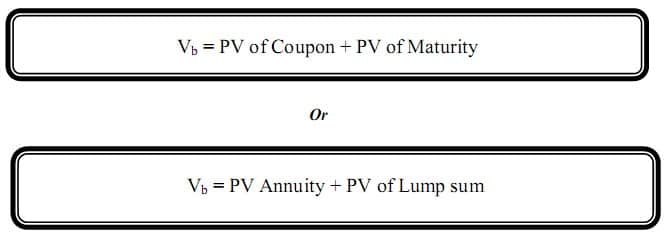
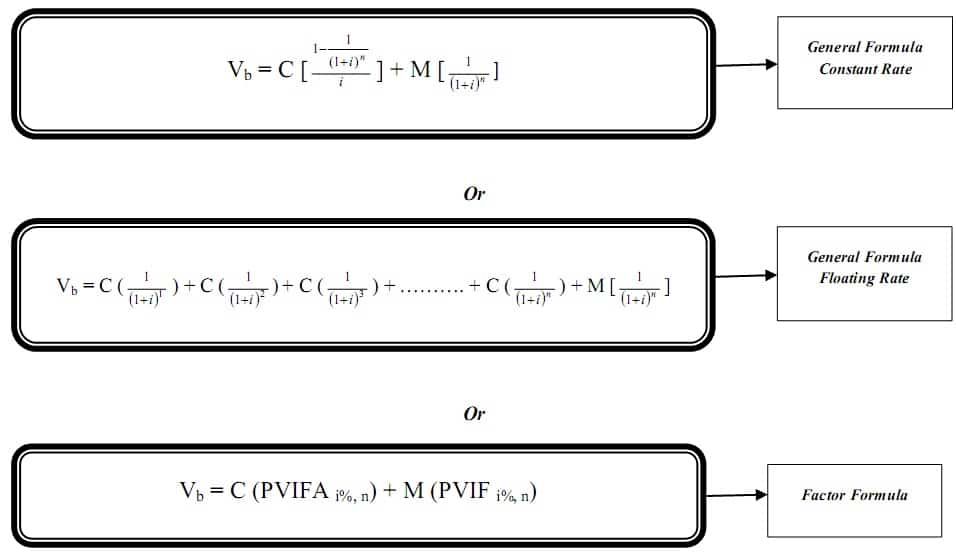
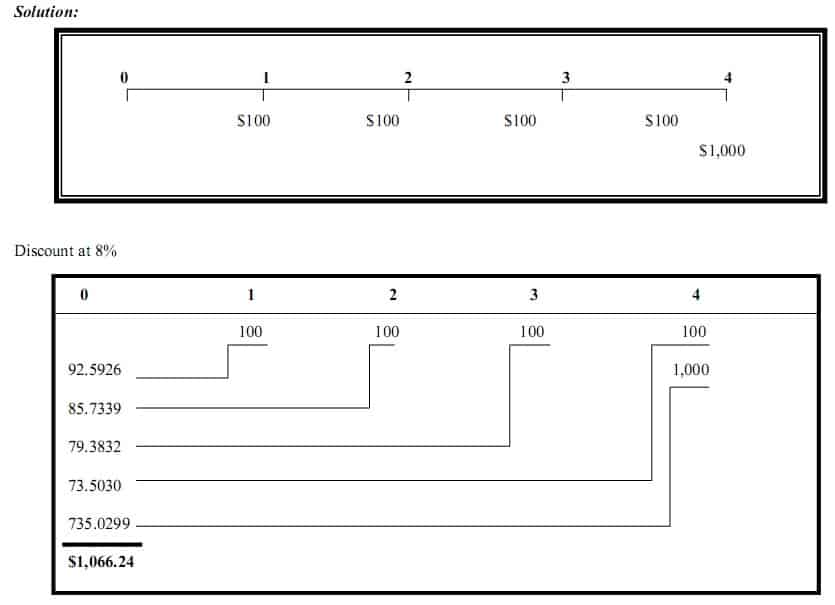
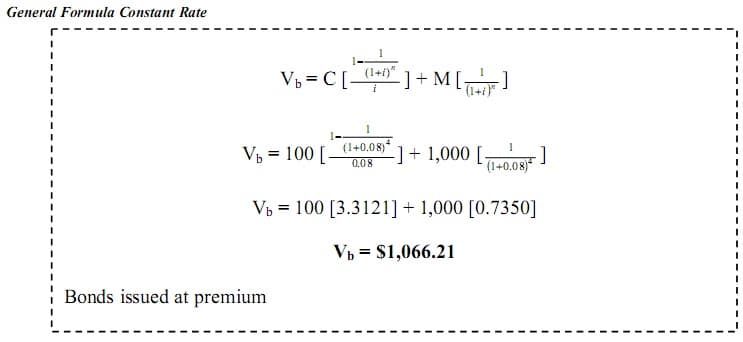
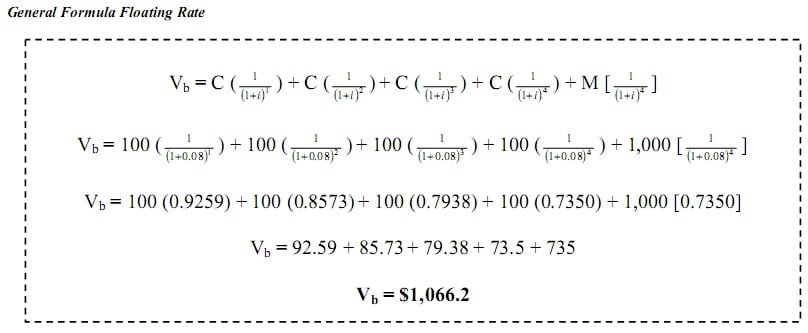
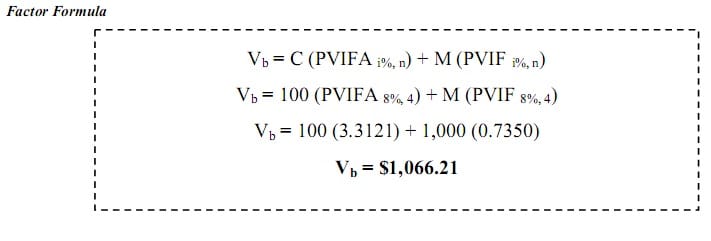
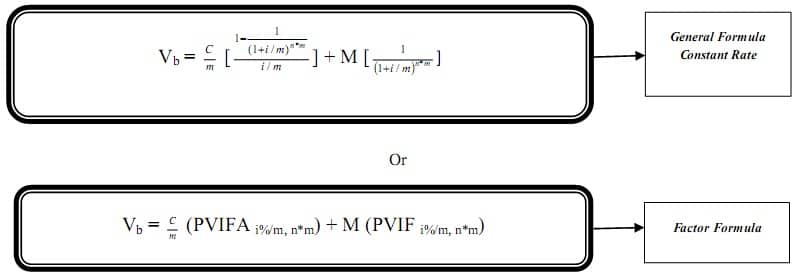
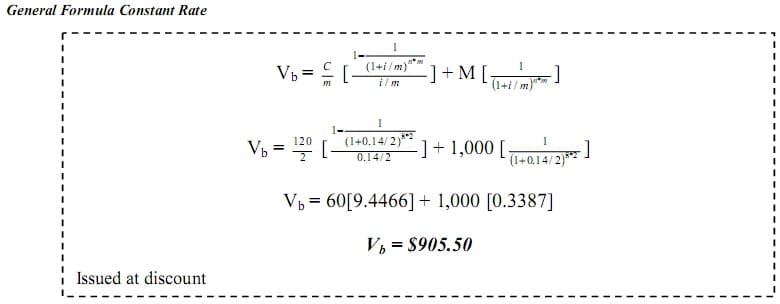







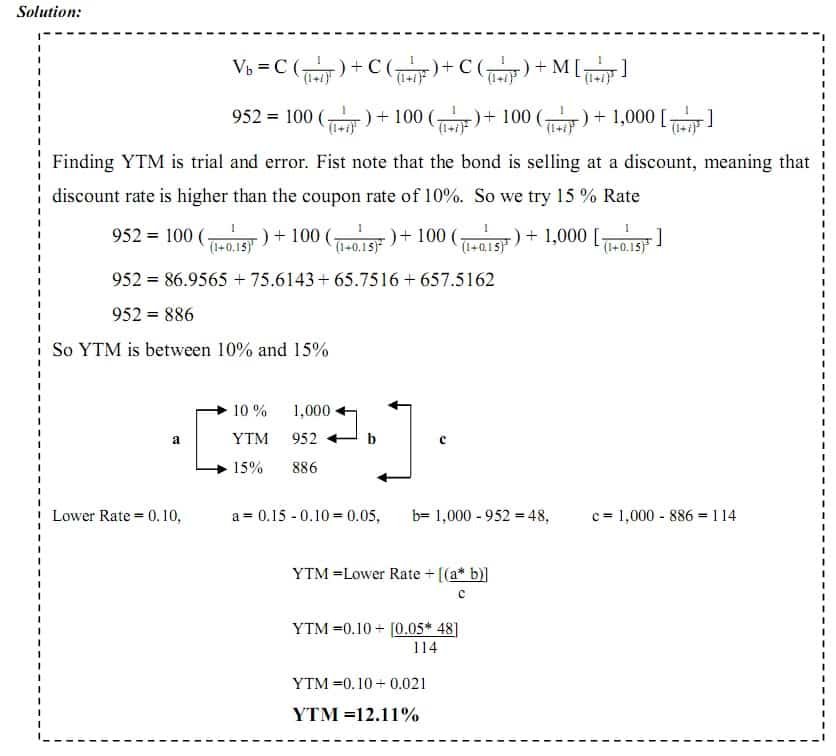
Hey there, You have performed an incredible job. I will definitely digg it and personally suggest to my friends. I am confident they will be benefited from this website.
Very nice post. I just stumbled upon your weblog and wanted to say that I have truly enjoyed surfing around your blog posts. After all I will be subscribing to your rss feed and I hope you write again soon!